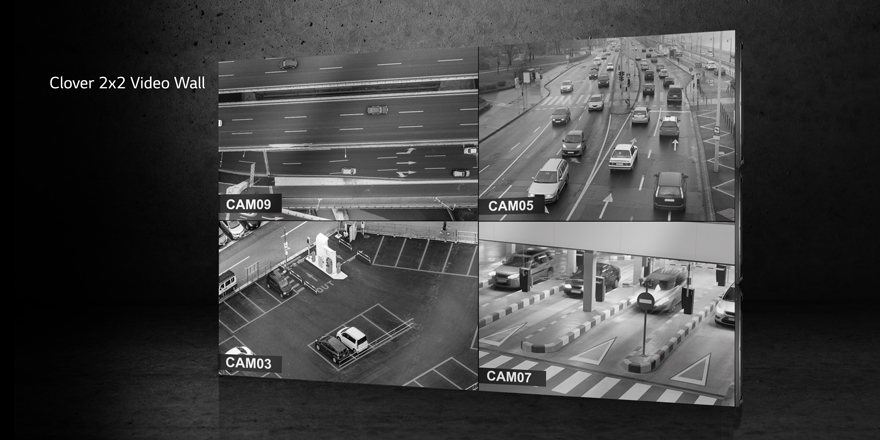In order to ensure optimal response times, control centers need to constantly stream video in real time. And because most of the real-time videos come from CCTV cameras, the adoption of video wall technology by government agencies is increasing in direct proportion to the increase in the demand for CCTV cameras.
Video wall technology involves tiling several large displays together to create one gigantic screen. This provides several advantages over using a traditional display. A larger, more vivid picture enables users to quickly focus on the displayed content and to distinguish small details more easily. When multiple users share a single video wall, they can quickly exchange information, making it easier for teams to cooperate and improve incident response time.
The need for accurate, systematic monitoring of real-time events is increasing. Video walls have quickly become a cornerstone of the video surveillance market, with increasing use in retail, entertainment and education sectors. Growing concerns about public safety and the security of people and properties mean that government agencies are also building integrated control centers with video walls.
An integrated control center can play a major role in dealing with potential incidents by analyzing the circumstances surrounding them. Traffic control centers, for example, can help with crime prevention, traffic safety, defense, and natural disaster response. They can be used to monitor situations in real time, to quickly dispatch response teams, and to enable officials to concentrate their efforts by directing events from a single facility.
Now let’s discuss video wall displays versus rear-projection cubes.
Traditionally, rear-projection cube technology has been widely used to create control room video walls, as flat panel video wall displays used to be more expensive than equivalent cubes and offered fewer features. Today, however, video wall panels can be mass-produced and are priced lower than cubes. And thanks to technological developments, flat panel video wall displays can now deliver the same or an even higher level of performance. This means that flat-panel video wall displays are now the go-to technology for new video wall installations across the globe, except for military and broadcasting applications.
Cubes are currently more common in military control rooms and broadcasting stations due to their extremely thin bezels. In military control rooms, for example, where radar detection is used to monitor warships and fighter aircraft, any pixels that are hidden by the bezel may lead to fatal consequences. And in broadcasting, newsrooms want to show crisp, clear images without bezel lines. The bezel thickness of a cube is typically less than 0.25 mm, which has given them an advantage in such situations despite other shortcomings that can include the need to install a separate cooling system and regular replacement of lamps, color wheels and filters.
The performance of a modern video wall display exceeds that of a cube in terms of core display features such as resolution and brightness. Where today’s video wall displays are thin, and easy to fit into most areas, a cube can require a minimum of three times the depth for the rear-projection screen with similar height and width. Video wall displays can be installed in a depth of slightly under 20 cm, including frame, with a product thickness of less than 10 cm, whereas cubes require at least one meter of space for the product and associated maintenance area. When it comes to weight, video wall displays also have the edge, since cubes can be more than twice as heavy. Video wall displays can be mounted on a wall, whereas cubes cannot due to their weight.
What’s more, the bezel thickness in video wall displays has been decreasing dramatically, so video walls are expected to be the long-term alternative to rear-projection cubes. Keep an eye out for unbelievably thin bezels never before possible in video wall displays, in the near future.
